
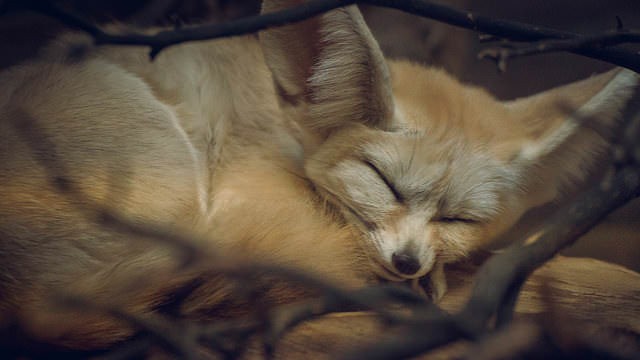
The fennec fox (Vulpes zerda) is the smallest species from the canid family, which also includes wolves, foxes, coyotes and domestic dogs. In fact, the adult fennec measures just 24-41cm in length, with its ears, the biggest part of its body, being 10-15cm long. The over-sized ears provide fennecs with extremely sharp hearing skills, and they can even detect prey underground. Although its thick fur might appear unsuitable for the harsh desert environment, it is in fact an interesting adaptation - the fur reflects the sun's heat during the day, and keeps it warm during the night.
Source: Ryan Summers / Flickr
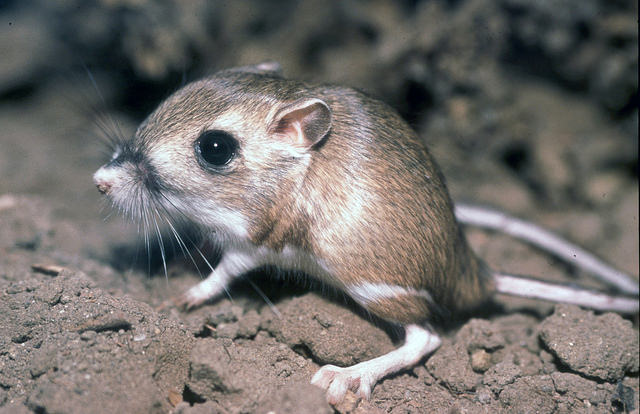
The tiny Ord's Kangaroo Rat (Dipodomys ordii) is, funnily enough, neither a rat, nor a kangaroo. It is however a rodent, that has long, kangaroo-like hind feet used for jumping. They live in semi-arid, open habitats, and a female is able to produce up to 4 litters a year, usually consisting of 3 babies each. The total length of its body is around 240mm, and much of this size is accounted for by its long tail, which can measure up to 160mm. This species is not endangered in the US, but it is in Canada, mainly due to the destruction of their natural habitat as well as climate change.
Source: Pacific Southwest Region USFWS / Flickr
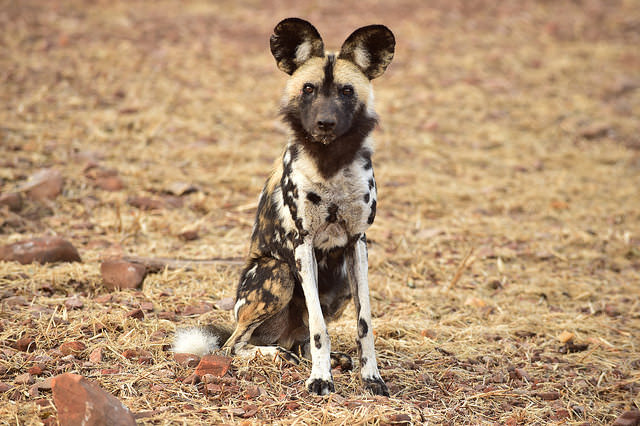
The African wild dog (Lycaon pictus), also known as the painted dog, may look cute with its large, round ears above its innocent-looking face, but you wouldn't want a bite from such a strong, carnivorous mammal. African wild dogs are classified as endangered, largely because they are frequently killed by farmers, and have suffered at the hands of diseases caught from introduced species such as domestic dogs. Unlike the fennec fox, they are one of the largest canids in the world. Their pups, which come in plentiful litters of up to 19, are generally born in other animals' abandoned dens.
Source: South African Tourism / Flickr
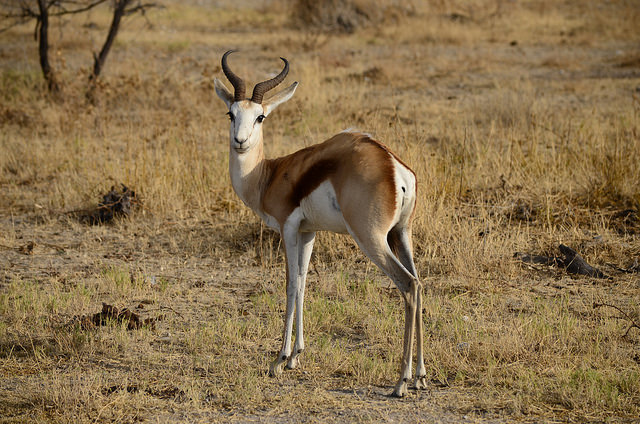
The Spingbok (Antidorcas marsupialis) is a medium-sized antelope-gazelle. It is generally brown and white, and both male and female adults have a pair of horns on their head which measure around 35cm in length. 'Marsupialis', which is similar to 'pocket' in Latin, refers to the pouch they have on their backs, which when lifted, gives off a strong, sweaty odor that scares off predators or attracts mates. With its adorable, huge eyes, big ears and agile body, it's no surprise this desert creature is the national animal of South Africa. Even though it is hunted for its coat and meat, this species is not currently classed as threatened.
Source: Ana Raquel S. Hernandes / Flickr
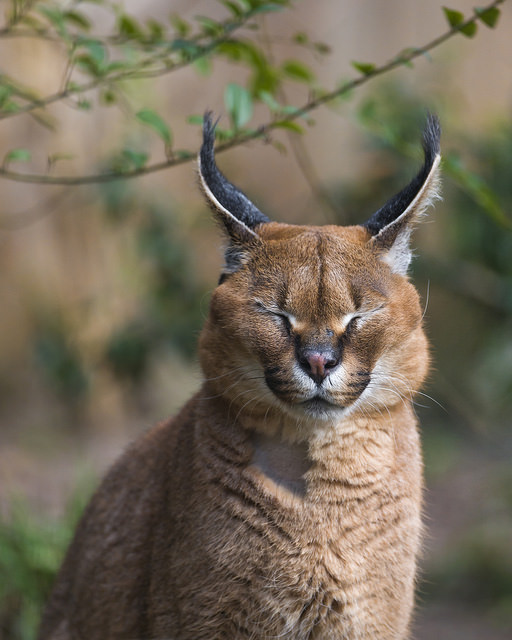
The elegant caracal (Caracal caracal) comes from the cat family and is found in Africa and southeast Asia. Its pointed, tufted ears give this magnificent creature its unique identity, although it is often confused with the lynx despite being more closely related to the serval and the African golden. The distinctive tufts on its ears aid communication and protect the ears themselves from flies. These cats are brilliant at camouflage, which in turn makes them outstanding hunters of their prey (they have even been known to take down ostriches) and it also ensures they are less vulnerable to human hunting.
Source: Tambako The Jaguar / Flickr
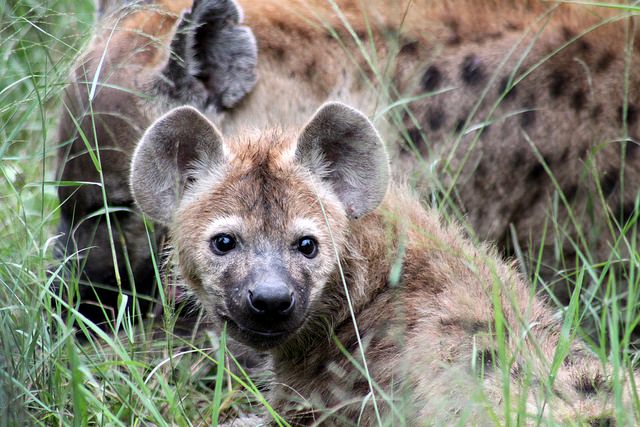
Although hyenas (Crocuta crocuta) are not known for being particularly cute, especially since they have such a violent character, their cubs look so cute, you would never consider them to be dangerous. Despite being better known for their famous 'laugh', Hyenas are also highly intelligent creatures. No wonder these cheeky mammals are such skilled predators, and very ambitious ones indeed: they often hunt for prey like wildebeests and zebras, which are far bigger animals than they are.
Source: flowcomm / Flickr
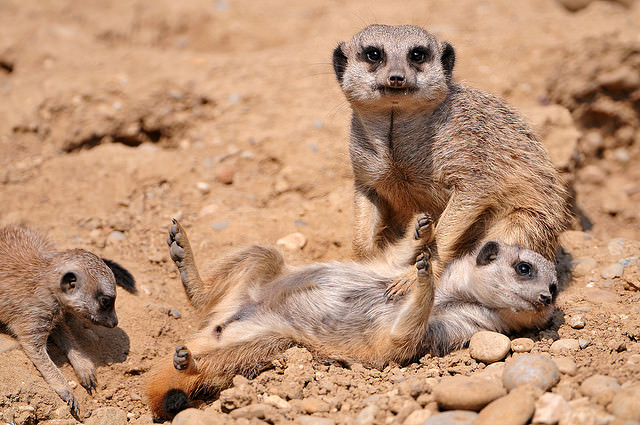
Meerkats (Suricata suricatta) are desert creatures belonging to the mongoose family, which are often spotted in 'clans' consisting of 20 to 50 members. They use their tall limbs and body, which measure between 35-50cm, to stand and look out for predators, and females even do this whilst nursing their young. Each clan generally consists of one alpha pair which get to mate, unlike the rest. They are actually rather strict about this, to the extent that any offspring that isn't sired by the alpha male might be killed to safeguard the other babies. Quite a tough move for such a loveable creature.
Source: Tambako The Jaguar / Flickr
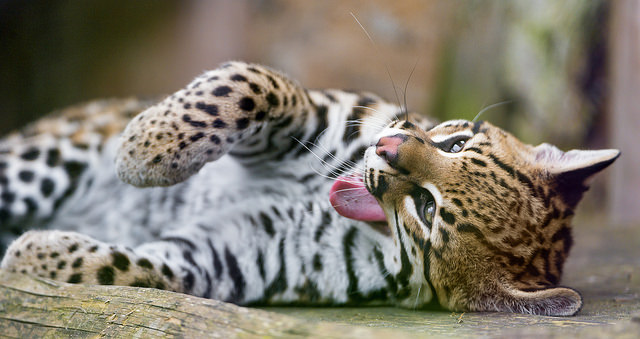
The ocelot (Leopardus pardalis), also known as the dwarf leopard, is a wild cat that inhabits South America, Central America and Mexico, although their presence has also been observed in other locations. Its appearance is very similar to that of a domestic cat, but the color patterns on its fur resembles that of a clouded leopard or jaguar. In fact, they are often hunted for their fur, placing them on the endangered list. This is rather worrying since their reproduction cycle only allows them 1 offspring every two years, but luckily enough, since 2008, numbers have been showing signs of improvement.
Source: Tambako The Jaguar / Flickr
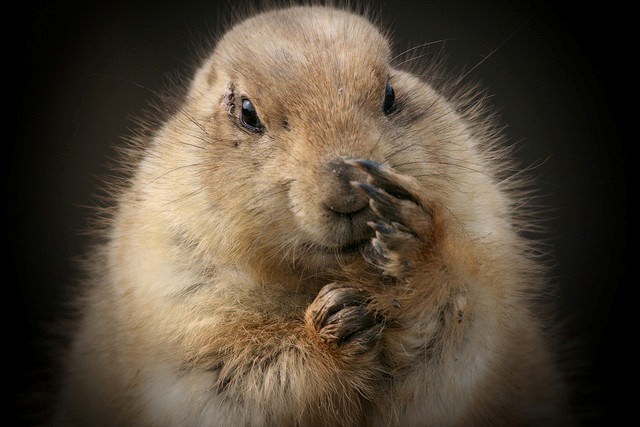
The charming little prarie dog (genus Cynomys) is sure to be the definition of cuteness to many, with its fluffy body and over-sized hands and feet. Native to North America, this 30-40cm long creature is no dog at all, but rather a rodent, with squirrel-like features. It was given its name because of its distinctive warning call, which resembles a dog's bark. It is herbivorous, and hence can be regarded as a pest. Thankfully, they turn out to be farmers' friends because of their habit of building burrows, which is considered beneficial to fields. But although they have such a cute appearance, Prarie Dogs, like Meerkats, tend to be rather brutal when it comes to dealing with the offspring of others.
Source: Jinterwas / Flickr

Sand cats are possibly the cutest cat (Felis margarita) species that roam the desert. This kitty looks similar to a domestic cat, but it has distinctive features, such as its huge ears and extra tufts of fur on its feet to protect it from burning hot sand. Its body is also adapted to retain water and ensure its survival in this harsh environment. Unfortunately, this beautiful creature has been listed as 'near threatened' since 2002, mainly because of the degradation of its natural habitat, and also because of hunting by humans and competition with domestic dogs and cats.
Source: Charles Barilleaux / Flickr